‘Tis Spring, and in the spring, an old aeromodeller’s fancy turns to thoughts of trimming all those models built during the dark damp days of winter. Readers will remember my current penchant for profile models, and I have just returned from the local recreation ground with a spring in my step and a bag of no less than five newly trimmed scale jets:
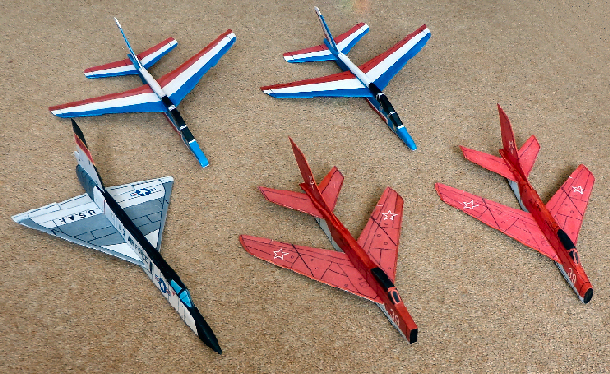
Above: new profile models for 2014. All glided well from a strong hand launch, needing only a little nose weight and little adjustment of adjustable rudders (Mig-19 and Alpha Jet) or elevons (F-106). They now just need motor mounts and a calm day!
For lots of good reasons profile scale models (‘PSMs’) make a lot of sense for us jet jockeys. There are a lot of excellent designs, new and old, available at the click of a mouse; they are easy to make, fly well and if you lose one due to a dubious motor it’s no big deal. They are great, too for experimenting with unusual planforms.
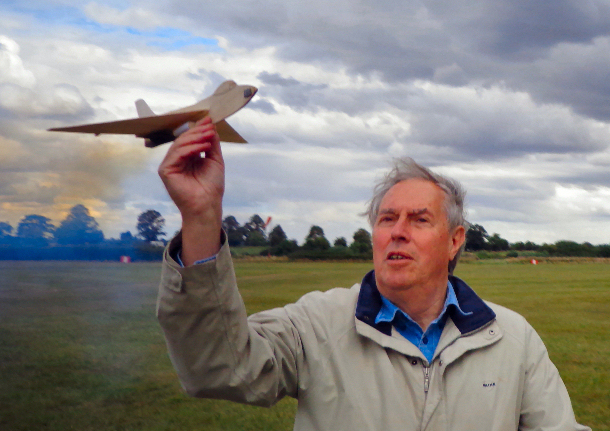
Above: Roger Smith at Old Warden, September 2013. The sadly undecorated profile Avro 707 was a lot of fun and flew splendidly with a (side mounted) Rapier L-2HP.
But I did have a problem with profile models in the old days, though, believing the term ‘profile scale’ was an oxymoron. To me they were crude and unsophisticated, even if (to repeat) they were quick to build, light, easy to adapt to a range of thrusts, and, if damaged by errant motors, were easy to repair or replace. I couldn’t, somehow, accept them as legitimate.
Part of the problem was that in my early rocketeering days I saw, and was attacked by, some very lacklustre models launched by quite prestigious modellers. I was very unimpressed by their pale wooden bodies and great lumps of Blu-Tac stuck on their noses (the models, not the modellers).
Fortunately, I was converted by the wonderfully decorated models of Howard Metcalfe:
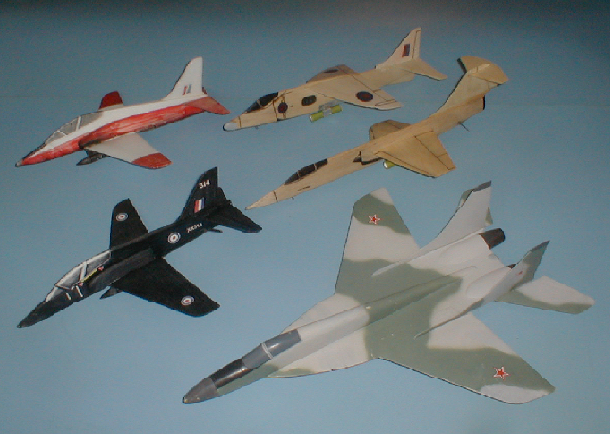
Above: a selection of Howard's profile models from a few years ago.
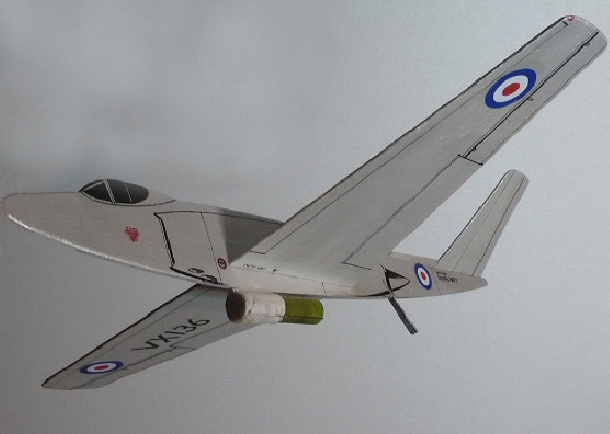
Above: Howard’s more recent Supermarine 508. Note the meticulously painted (sprayed, I believe), finish and the thrust tab. The butterfly tail is quite unusual.
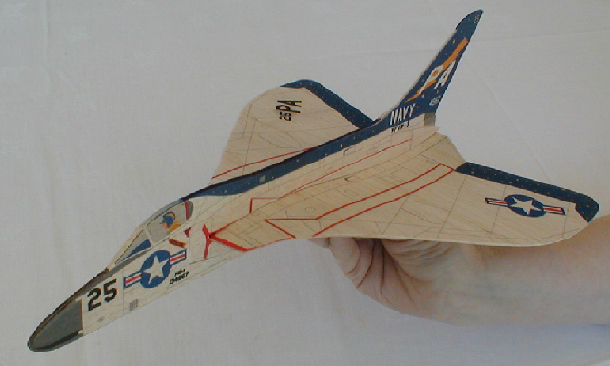
Above: Another of Howard's more recent models. This is what Bill Dean's Skyray should look like! Howard prepared the templates using CAD. These were then printed on tissue which was then affixed to sheet balsa before assembly.
Others, too, showed me what PSMs could look like:

Above: Walter Snowdon’s fine Jetex Javelin. Such beautiful paintwork takes more skill and patience than I can easily muster!
So it was that I started the ‘Campaign for real PSM’s’ whose members eschew bare wood, will crush, dismember or surreptitiously eliminate any examples of, say, Bill Dean’s Skyray or Hunter that lack national markings and fin flashes.
The old Veron and Keil Kraft ‘ARTF’ profile kits like the Sea Hawk came pre-decorated, and looked good on the flying field without too much effort from the builder. Though they are easy to recreate using computer graphics programs, they appear only to appeal to old guys like me who remember them from the first time round! This is a pity as they still make an excellent introduction to rocket flying.
George Foster, like many older modellers, prefers to design his own models. But, I am pleased to say, he obviously aggrees with the principles of CRPSM:
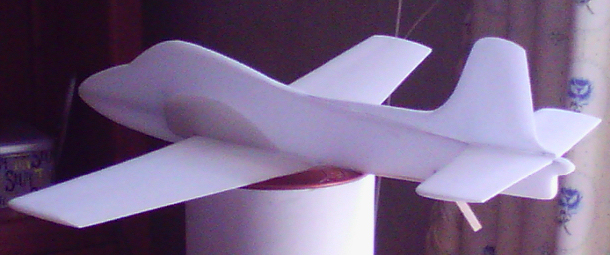
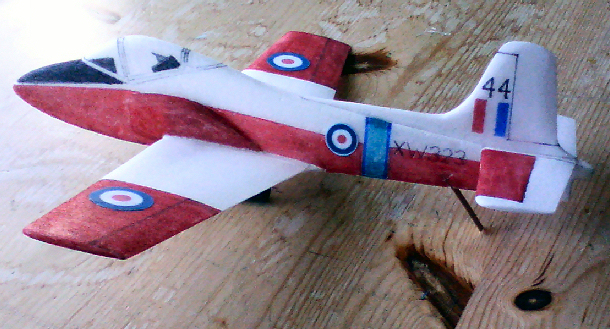
Above: George’s Depron Jet Provost before and after decoration with felt tip pens.
But for me, there was a ‘problem’: finishing the bare wood (or Depron) requires skills with paint (or felt-tip pens) that I don’t find easy. I lack the patience and artistic acumen to do this well.
So I prefer the ‘printed paper on balsa (or Depron) methods which have been all but perfected by Rob Smith:
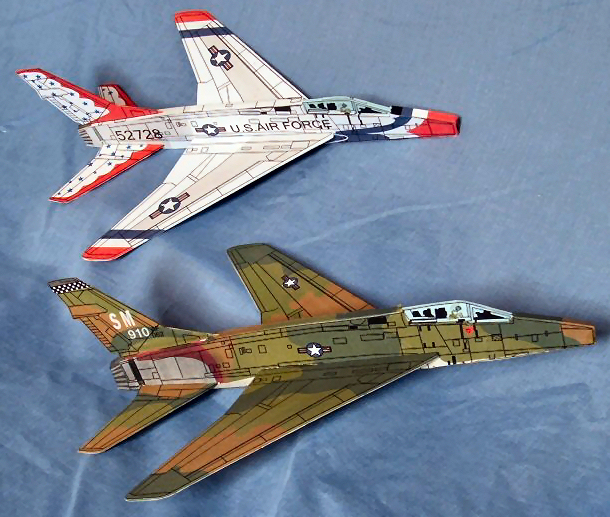
Above: it’s easy (and quick) when you know how. Rob’s two Super Sabres. Take your pick!
This method can be taken as far as you want to go, if one is happy with a square fuselage the templates can be transferred directly to balsa or Depron sheet:
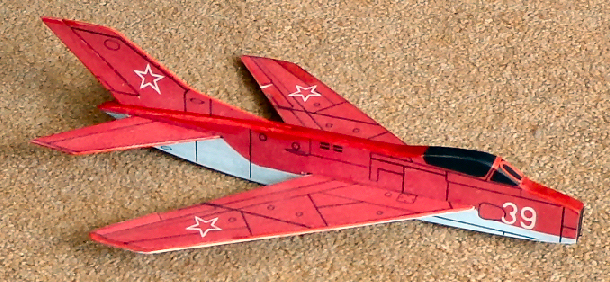
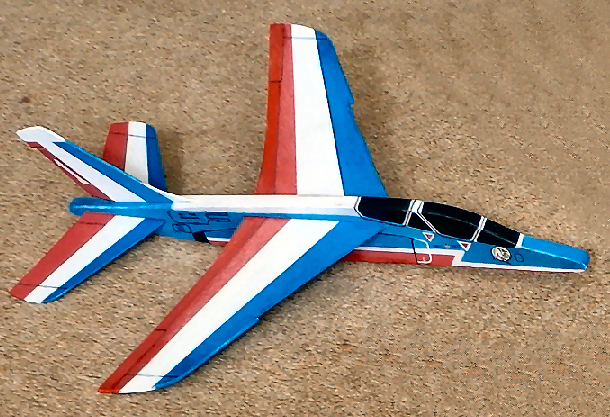
Above: two examples of my profile models ‘just off the press’ with square '3D' fuselages. Here, printed templates are transferred directly to sheet balsa.
Alternatively, you can complicate matters by going for a rounded fuselage:
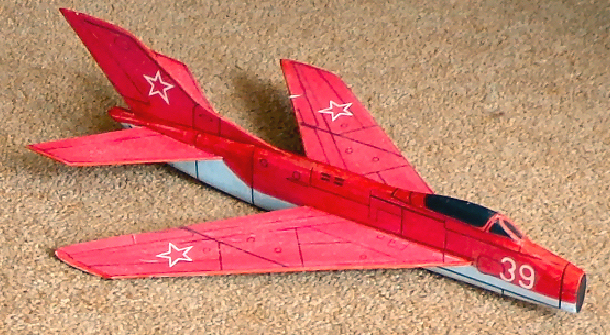
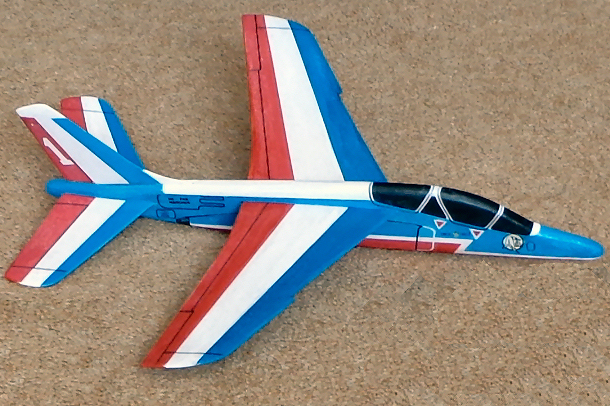
Above: also ‘just off the press’ - two models with rounded fuselages. Here, templates are transferred to the balsa surfaces after construction. Not easy!
Is rounding the fuselage worth the effort? Probably not, even though it saves a little weight. The square ones seem to fly equally well, and in the air, who is to notice? And all the extra complication rather goes against the received wisdom that profile models should be ‘quick and easy’.
John Rigby is another member of CRPSM, and uses (I think) printed tissue on his true profile models:

Above: John’s very nice MiG 21. Hadrian Tucker has ponted out that tissue on balsa is not particularly light, and printing directly on balsa would be better. Yes, but how?
Chris Richards, too, believes in properly decorated profile models:
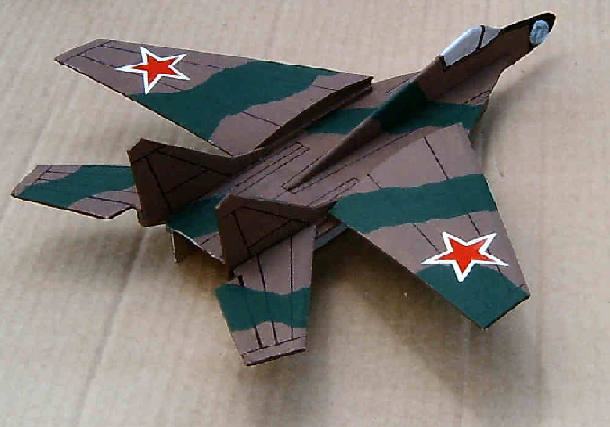
Above: Chris’s MiG 29 triumphed at the 2014 Peterboro' Flying Aces. Built from sheet balsa, templates could be transferred to balsa sheet before building. But this is more than a simple profile model: perhaps ‘semi profile model’ is an apt description?
Meanwhile, I carry on with my own obsession. Here is the latest:
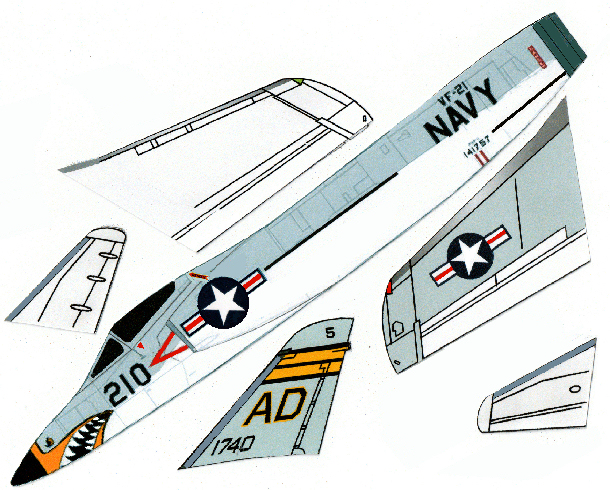
If anybody would like to join the CRPSM, please contact me. Members could receive a T-shirt and a badge, and a full set of felt tip pens to use on any bare bodied models (I know, I know) they find on the flying field!
Oh yes: if anyone can suggest an easy ways to transfer printed copies of computer generated templates of models to balsa, or knows of a reasonably priced flat bed printer that can handle 1/16" sheet balsa, please let me know.

